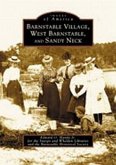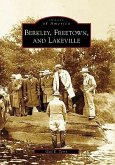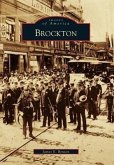In 1639, Barnstable was established by the Plymouth Plantation Colony as the third town on Cape Cod. Over time, Barnstable was divided into six distinct villages: Centerville, Cotuit, Hyannis, Marstons Mills, Osterville, and West Barnstable. Each of these communities grew and developed their own libraries, schools, churches, and general stores. Local industry was abundant, and residents were employed as blacksmiths, cobblers, copper smiths, and farmers. Saltworks, cranberry bogs, shipbuilding, and light industry also supported the area. Barnstable documents the evolution of the town between the 1839 centennial celebration and the 1939 tercentenary and shows how the advent of both the railroad and steam-powered ships spurred great change in the town's communities. Today, economic life revolves around Hyannis while the other villages have become more residential in nature.








